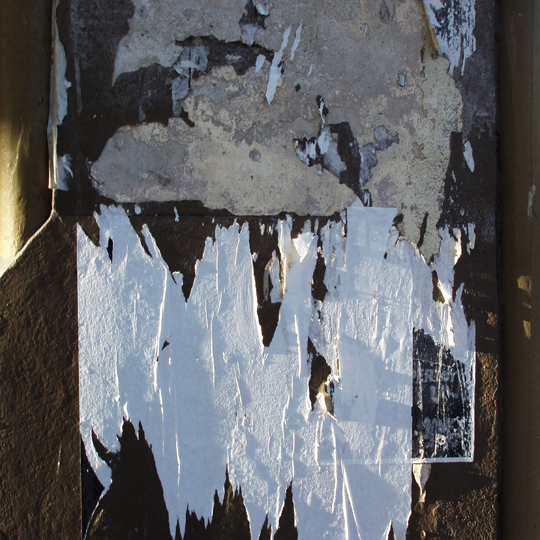
Selected Poems of James K Baxter, edited by Paul Millar (cover)
.
.
.
Baxter ambushed me again
today. (Yes, okay, I’ll explain.)
I’m in the New Zealand Reference Collection, Wellington City Library, and making my way to one of my habitual reading spots. Having already picked up the latest issue of Sculpture, and a Vidar Sundstøl novel, I have plenty to occupy my afternoon … but some library staff member has set up this book of Baxter’s poems on the end of a shelf.
Opening the slim volume at random, I smile my way through some familiar verses, but eventually turn back to the first in Millar’s selection – the iconic High Country Weather, which Baxter had penned in 1945 at 19 years of age:
Alone we are born
…… And die alone;
Yet see the red-gold cirrus
…… Over snow mountain shine.
Along the upland road
…… Ride easy, stranger:
Surrender to the sky
…… Your heart of anger.
The opening lines seem like a contrary echo of “Thee, God, I come from, to thee go” (Gerard Manley Hopkins, 1844–89). And the supercharged description, “red-gold cirrus”, takes me straight to the final cadence of The Windhover, in which the poet gazes not up at wind-winnowed clouds but into the glowing coals of a camp-fire:
… shéer plód makes plough down sillion
Shine, and blue-bleak embers, ah my dear,
Fall, gall themselves, and gash gold-vermillion.
From the first, I suspected I might be reading too much into Baxter’s lines – would the adolescent poet have (as I had) read Hopkins? At school, he had certainly read Auden, Spender, MacNeice, and Day-Lewis – and also, later, Rimbaud, Dylan Thomas, and Hart Crane (Te Ara: The Encyclopedia of New Zealand). We know he had been turning out poems since the age of seven, “and completed six hundred between the ages of sixteen and twenty” (Paul Stanley Ward).
Whereas Hopkins revelled in the arcane, characteristically seeking out “All things counter, original, spare, strange” (from G M Hopkins, Pied Beauty), Baxter delighted in a beguiling simplicity, an almost facile fluidity. We do well to remember, though, that “Baxter was a compelling mix of high and low culture, sacred and profane” (Paul Stanley Ward).
Some see existentialism in High Country Weather – it certainly carries little trace of the Catholicism that was later to infuse the poet’s work. To me, it seems more Buddhist than existentialist. In Sexual Personae [p5], Camille Paglia asserts that “Buddhist meditation seeks the unity and harmony of reality,” but later on the same page adds that “Every time we say nature is beautiful, we are saying a prayer, fingering our worry beads.”

James Dean in “Rebel Without A Cause”
I cannot avoid pointing to another James: James Dean, in Rebel Without a Cause – although, of course, High Country Weather predates the 1955 film by a decade. Baxter described his adolescence as “a testing time”, and his university experience as a “long, unsuccessful love affair with the Higher Learning” (Paul Stanley Ward).
Hopkins and Baxter, each with very different sensibilities, both tap into something of how the human mind makes sense of things. Camille Paglia argues that “Poetry is the connecting link between body and mind” (Paglia, 1990), elsewhere contending that “Poetry is the way into a spiritual vision of society and the universe.”
Perhaps I’d have been closer to the mark had I connected High Country Weather with words from Be Happy in Bed (1958-9, 1979, also included in Millar’s selection):
The self so persecuted by enigmas
prefers a mountain to a nagging mother.
NOTES:
The “today” in my opening couplet refers not to the date of publication, but to the day (a week or more ago) on which I started writing this piece.
Paul Stanley Ward’s story, James K Baxter: On the Razor’s Edge, appears on http://www.nzedge.com/james-keir-baxter/
Article on life and poetry of James K Baxter is found on Poet Seers, a web-site developed by members of the Sri Chinmoy Centre.
Analysis of The Windhover: https://hokku.wordpress.com/2011/03/23/deciphering-hopkins-the-windhover/
IMAGES:
The cover image for Selected Poems of James K Baxter, edited by Paul Millar shows Baxter outside “Canterbury University” in 1947. Image credit: Hocken Library.
James Dean in “Rebel Without A Cause” appears in a piece titled “100th Anniversary Of The T shirt” on the web-site, http://www.designbyhumans.com/forum/dbh-news/1153137/100th-anniversary-of-the-t-shirt/








![[untitled #117] 13 August 2010](https://atwistedpair.files.wordpress.com/2010/08/100813-impressions-117-01-s.jpg?w=630)